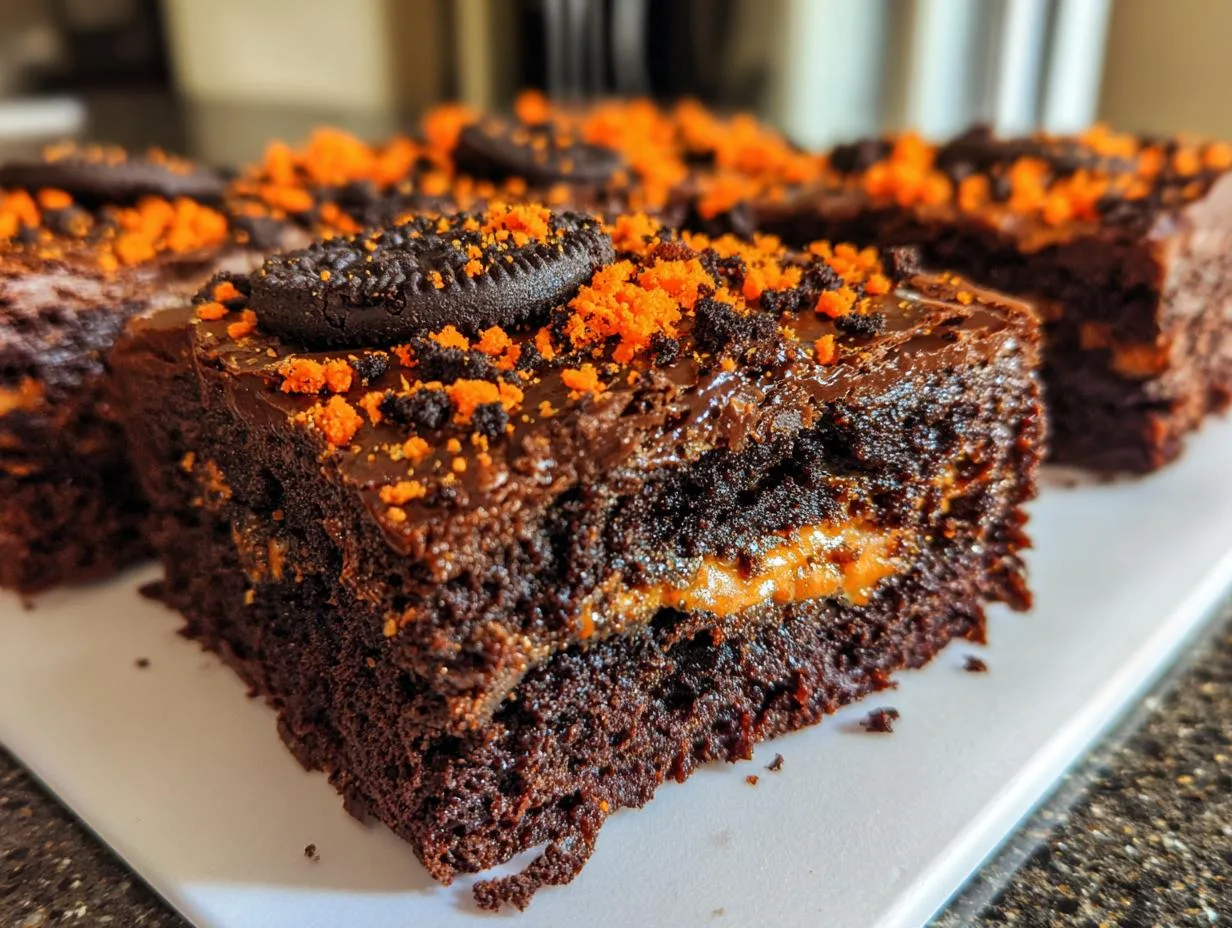Craving something sweet and satisfying after a workout or during a late-night Netflix binge? A protein mug cake might be your new best friend. This quick, microwave-friendly dessert isn’t just convenient—it’s packed with protein and actually tastes good. Whether you’re into fitness, watching your macros, or just looking for a smarter dessert, this single serving protein cake checks all the boxes.
Key Takeaways
- Protein mug cakes are a quick and easy treat that can be made in minutes
- You only need a handful of basic ingredients and a microwave-safe mug.
- Follow the step-by-step instructions to make your own protein mug cake
- Personalize your mug cake by choosing from a variety of flavors and toppings.
- Avoid common mistakes like overcooking or using too much protein powder for the best results
Table of Contents
What You Need to Make a Protein Mug Cake
You don’t need a stocked pantry or a ton of skill to make a solid protein mug cake recipe. In fact, that’s the beauty of it—just a few everyday ingredients and a microwave get the job done.
Here’s what you’ll typically need:
Base Ingredients
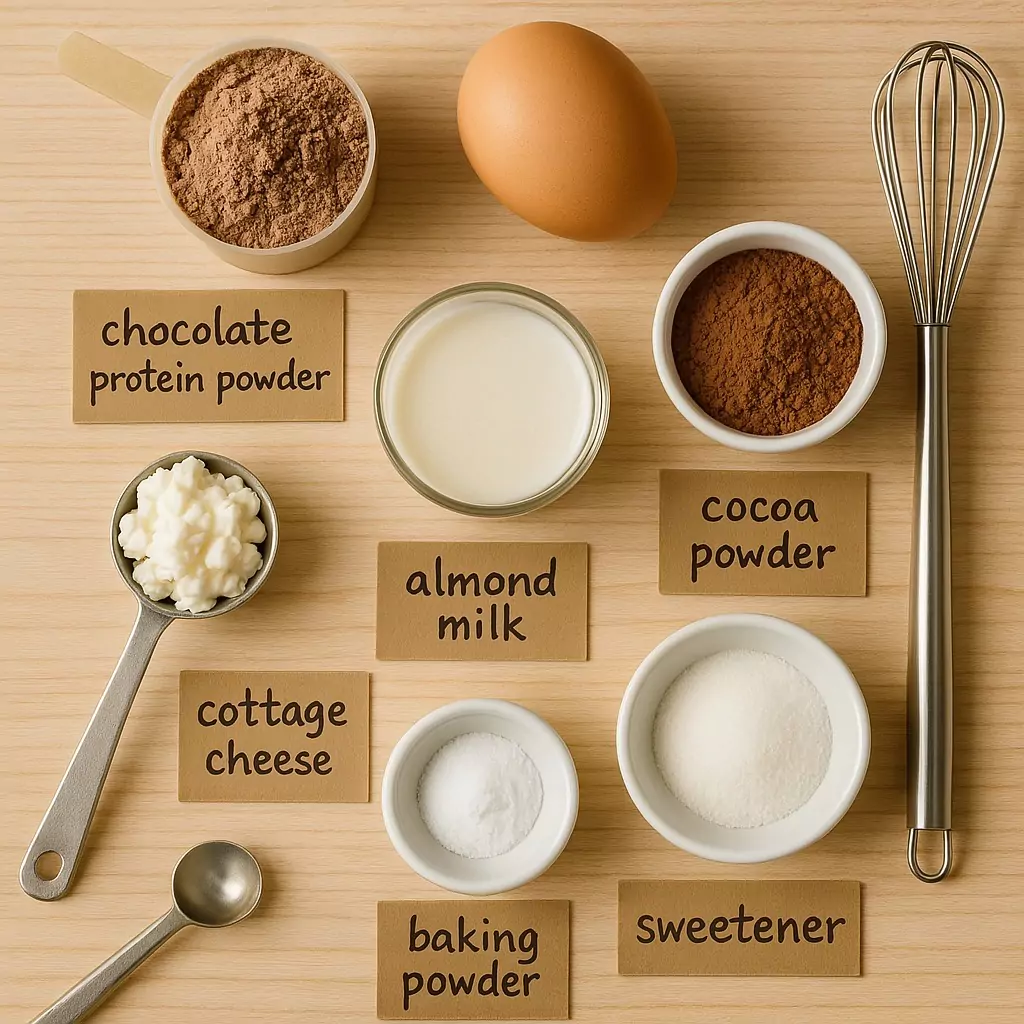
- Protein Powder: This is the star of the show. Whey, casein, or plant-based all work—just note the texture will vary. Chocolate or vanilla are common flavors, but you can get creative.
- Egg or Egg Substitute: Adds structure and moisture. For vegan versions, a flax egg or mashed banana works well.
- Milk or Milk Alternative: A little liquid goes a long way. Almond milk, oat milk, dairy—it’s your call.
- Baking Powder: Just a pinch helps the cake rise and stay fluffy.
- Flour Substitute (optional): If you want extra texture, add a spoonful of almond flour, coconut flour, or oat flour. Or skip it if you want something super dense and protein-heavy.
- Sweetener: Depending on your goals, you can go with honey, maple syrup, stevia, or nothing at all—some protein powders are sweet enough on their own.
Optional Add-Ins
- Cottage Cheese: Adds moisture, creaminess, and more protein. Great for a softer texture.
- Cocoa Powder: Especially if you’re making a chocolate protein mug cake—this deepens the flavor.
- Vanilla Extract, Cinnamon, or Salt: Just a pinch of these takes it from “meh” to “oh wow.”
- Toppings: Think Greek yogurt, nut butter, fresh fruit, or a few dark chocolate chips.
Smart Swaps
This recipe is flexible. Here are some clever substitutions you can consider:
- Low carb: Skip the flour and use almond flour or just the protein powder.
- Dairy-free: Use plant protein and non-dairy milk.
- Vegan: Swap the egg and make sure your protein is plant-based.
Once you’ve made it once or twice, you’ll be able to eyeball the mix and adjust it based on your taste.
Step-by-Step: How to Make It Perfect Every Time
Making a protein mug cake isn’t just easy—it’s foolproof once you know the basics. Follow these steps, and you’ll have a warm, fluffy, high-protein treat in minutes.
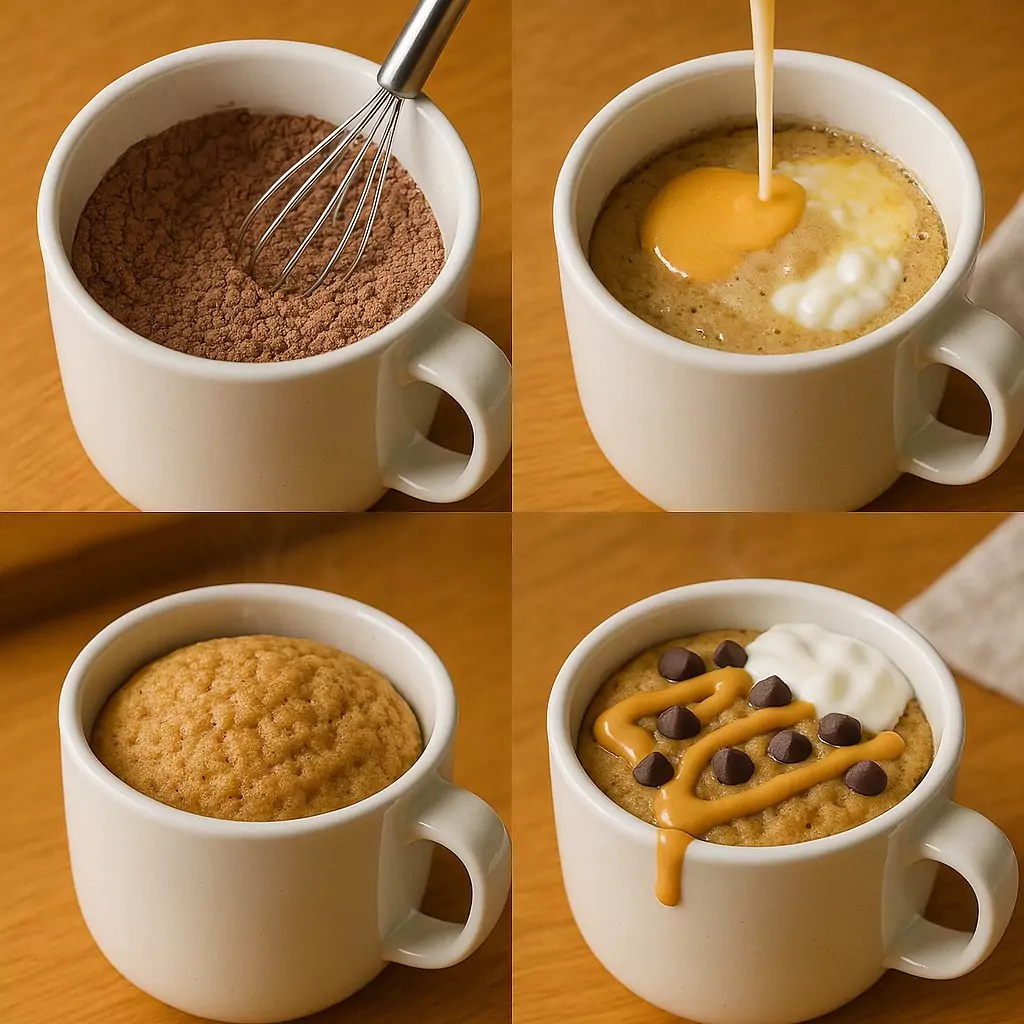
- Grab Your Mug Pick a microwave-safe mug. Choose one that holds at least 10–12 ounces. You want a little extra space so your cake doesn’t overflow.
- Mix Your Dry Ingredients In the mug, combine:
- 1 scoop of protein powder
- ½ tsp baking powder
- Optional: 1 tbsp cocoa powder (especially for a chocolate protein cake)
- Pinch of salt or cinnamon, if you like
Mix well so there are no clumps.
- Add the Wet Ingredients To the dry mix, stir in:
- 1 egg or flax egg
- 2–3 tbsp milk of choice
- 1 tbsp Greek yogurt or cottage cheese (makes it moist)
- ½ tsp vanilla extract (optional)
- 1–2 tsp sweetener, if needed
Stir until smooth. If the consistency appears too thick, simply add a splash more of milk. It should look like cake batter—thick, but pourable.
- Microwave Pop your mug into the microwave. Start with 45–60 seconds on high. Most cakes can be cooked in approximately one minute, but the cooking time may vary depending on the power of your microwave. Don’t overcook—it’ll dry out fast.
Tip: It’s better slightly undercooked than over. You have the option to zap it again for an additional 10 seconds.
- Let It Cool (A Bit) It’s hot! Give it 1–2 minutes to cool slightly. This also helps the texture settle.
- Add Your Toppings Drizzle with peanut butter, top with berries, sprinkle a few dark chocolate chips, or dollop some yogurt. Or don’t. It’s good either way.
Not into protein powder? These cottage cheese-based alternatives might just win you over…
5 Easy Cottage Cheese Protein Mug Cake Recipes (No Protein Powder)
These mug cakes skip the powders and use cottage cheese as the main source of protein. The result? Soft, rich, and naturally satisfying cakes you can feel good about.
1. Chocolate Cottage Cheese Mug Cake
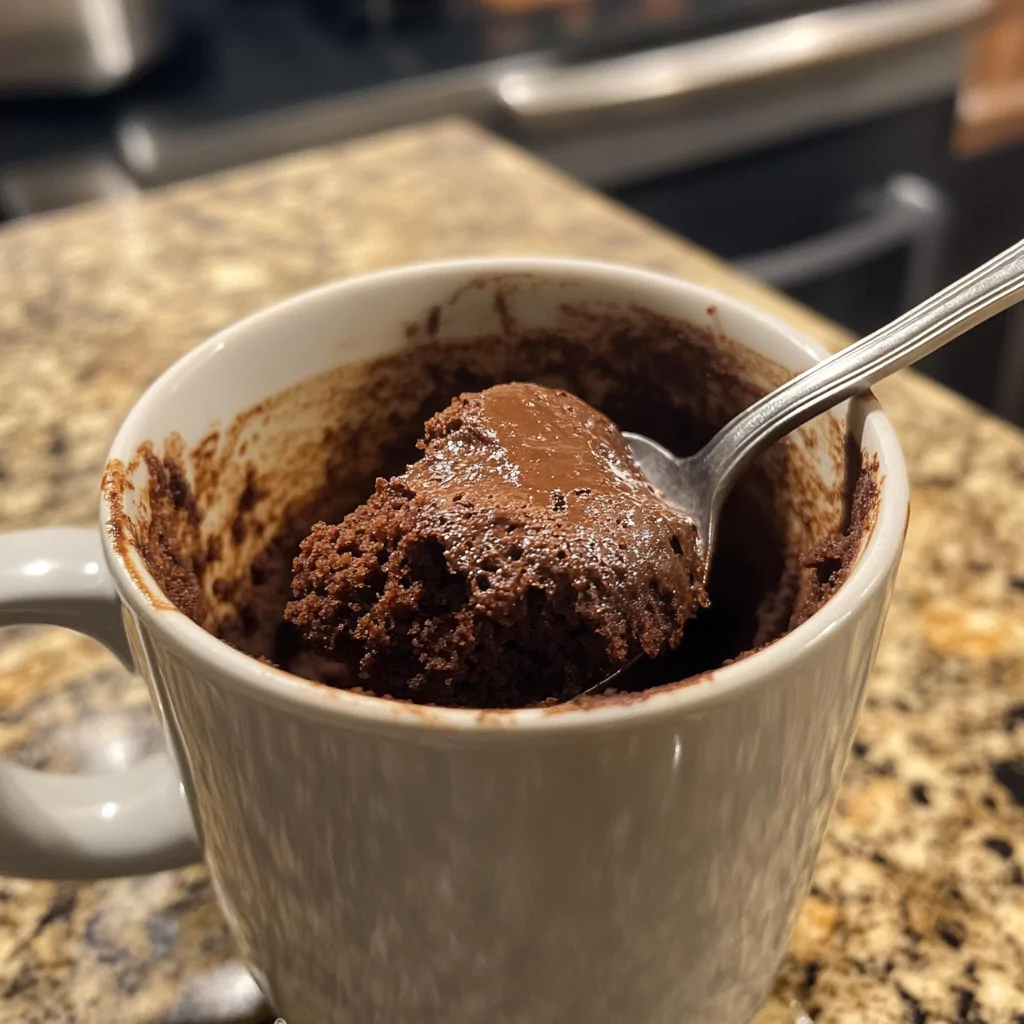
Rich and fudgy with 15–18g of protein.
You’ll Need:
- ¼ cup full-fat cottage cheese
- 1 egg
- 1 tbsp cocoa powder
- 1 tbsp oat flour (or almond flour)
- 1 tsp honey or maple syrup
- ½ tsp vanilla extract
- ½ tsp baking powder
- Pinch of salt
Instructions:
Blend all ingredients until smooth. Pour into a greased mug. Microwave 60–75 seconds. Let it cool slightly before eating.
2. Cinnamon Oat Cottage Cake
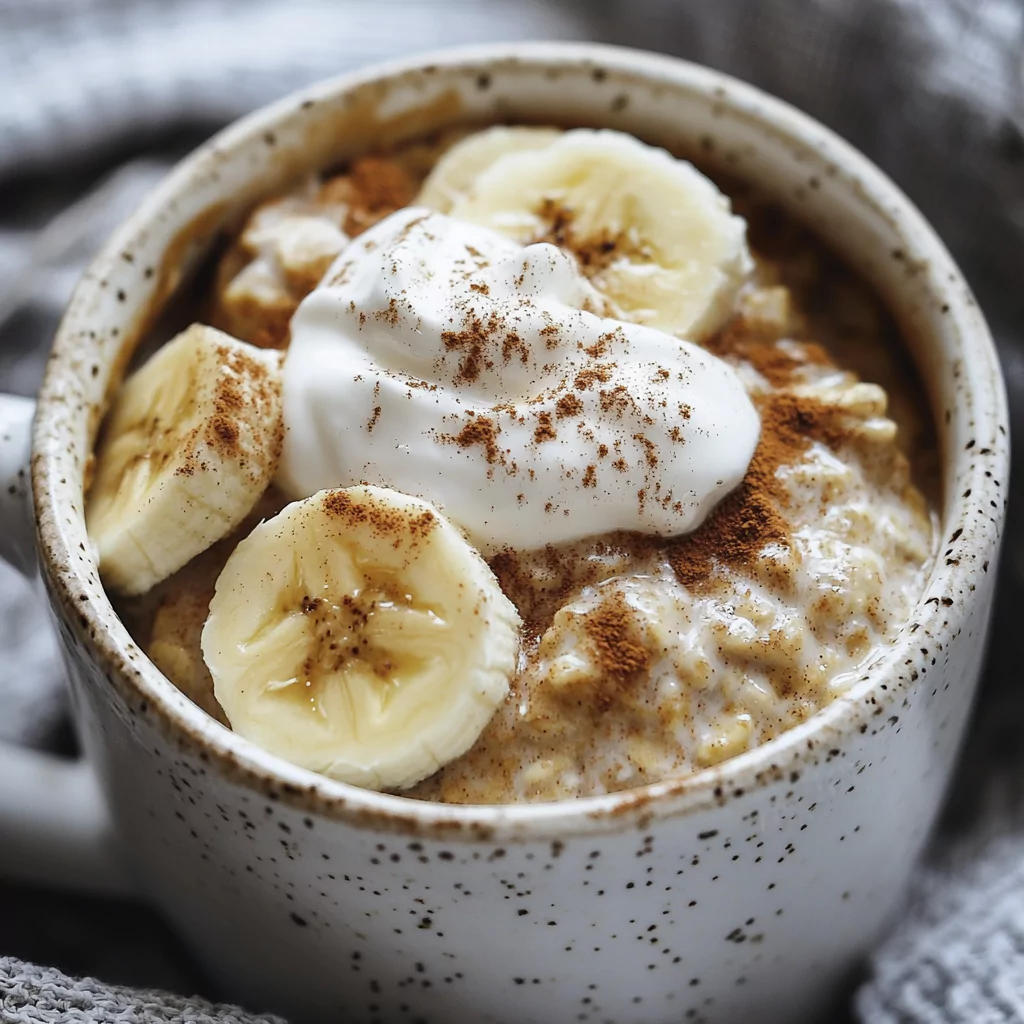
Cozy and breakfast-worthy.
You’ll Need:
- ¼ cup cottage cheese
- 1 egg white
- 2 tbsp quick oats
- ½ tsp cinnamon
- 1 tsp honey
- ½ tsp baking powder
- Splash of milk if needed
Instructions:
Stir everything in a mug (or blend for smoother texture). Microwave for 60–70 seconds. Top with Greek yogurt or banana slices.
3. Banana Nut Cottage Mug Cake
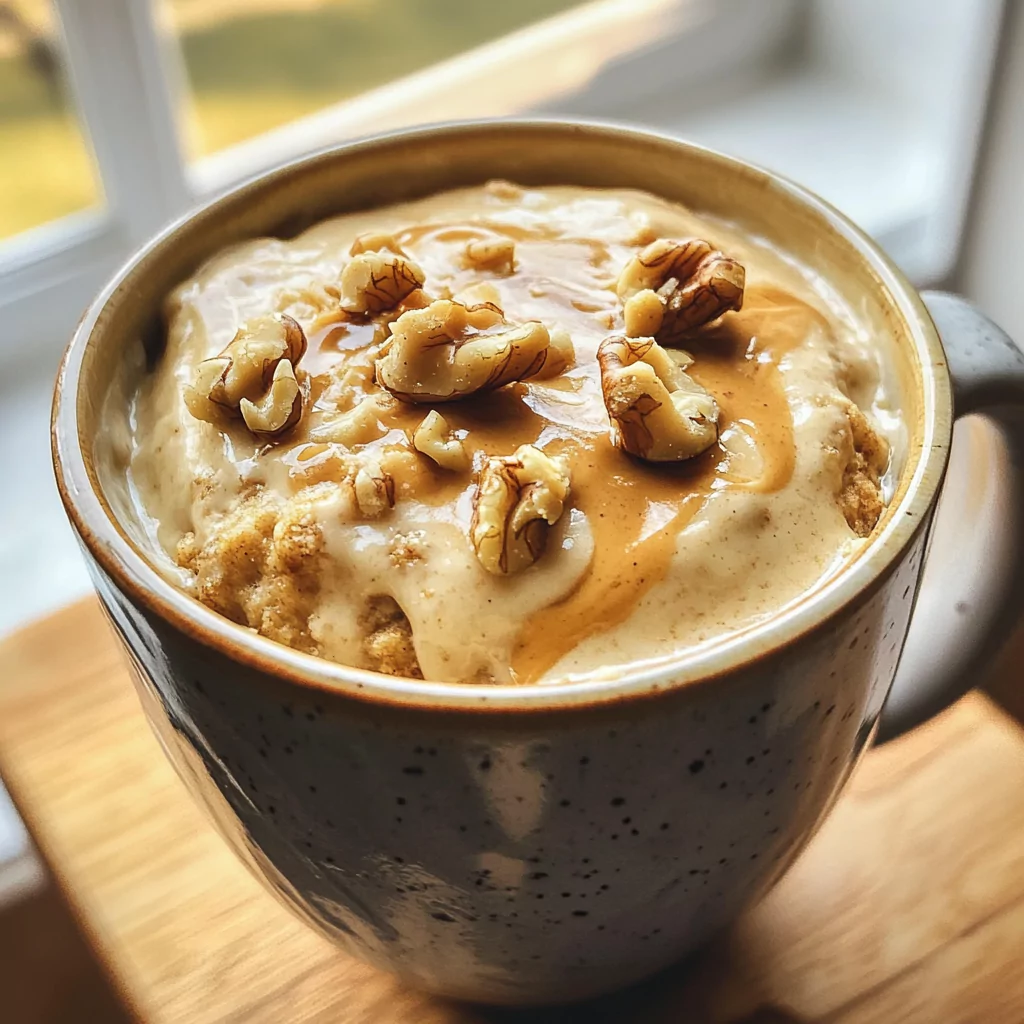
Naturally sweet and super satisfying.
You’ll Need:
- ¼ cup cottage cheese
- 2 tbsp mashed ripe banana
- 1 egg
- 1 tbsp almond flour
- ½ tsp baking powder
- Dash of cinnamon
- Optional: crushed walnuts
Instructions:
Mix everything in a mug or small bowl. Microwave 60–75 seconds. Serve warm, maybe with a dab of peanut butter.
4. Vanilla Berry Cottage Cake

Light, fruity, and high-protein.
You’ll Need:
- ¼ cup cottage cheese
- 1 egg
- 1 tbsp flour (any kind)
- 1 tsp vanilla extract
- 1 tsp maple syrup
- ¼ cup fresh or frozen berries
- ½ tsp baking powder
Instructions:
Blend all ingredients (except berries), fold in berries, and microwave 60–75 seconds. Let it sit 1–2 minutes before eating.
5. Peanut Butter Chocolate Chip Cake
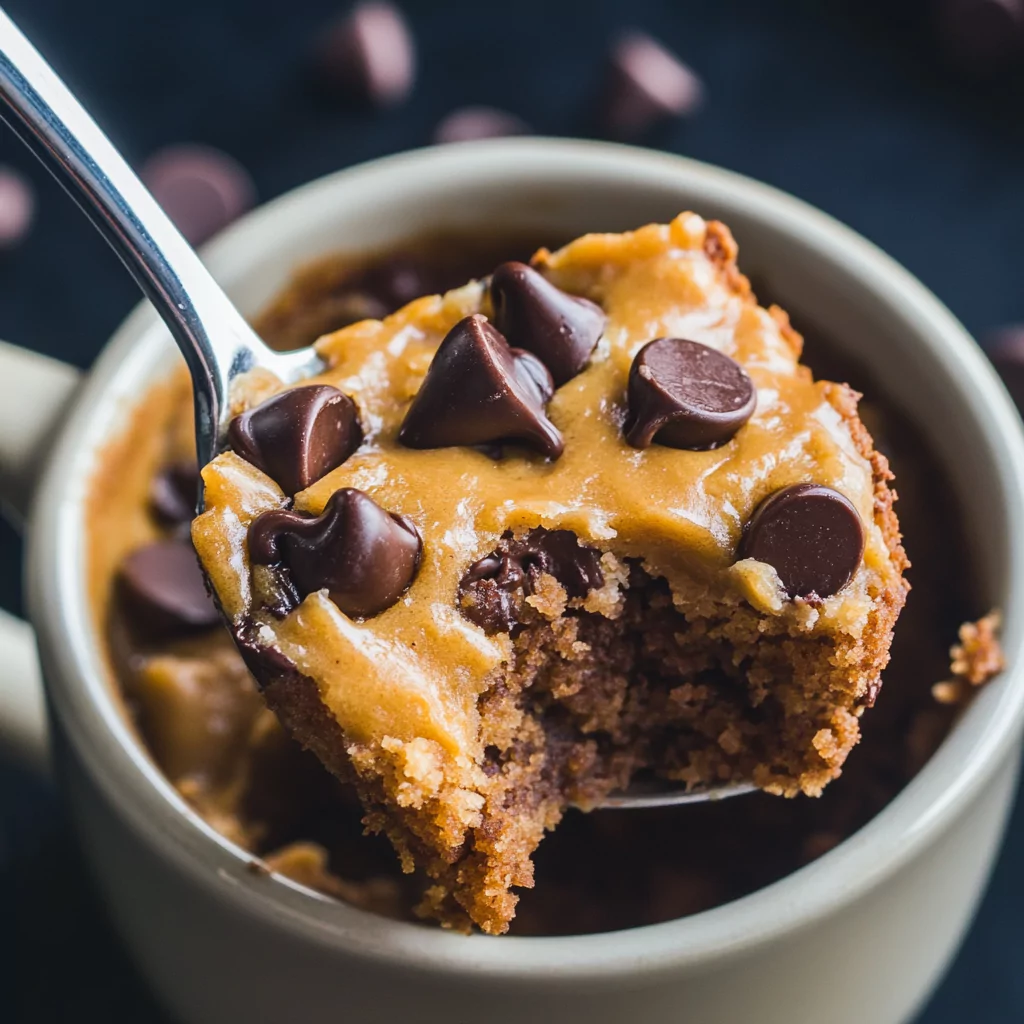
Sweet, salty, and secretly good for you.
You’ll Need:
- ¼ cup cottage cheese
- 1 egg
- 1 tbsp peanut butter
- 1 tbsp oat flour
- ½ tsp baking powder
- Tiny pinch of salt
- Optional: mini dark chocolate chips
Instructions:
Mix or blend ingredients, stir in chips, and microwave for 60–70 seconds. Top with a few extra chips or more PB.
How to Make It Taste Even Better
Let’s be honest—cottage cheese in a cake sounds strange at first. But with a few tweaks, these mug cakes go from “meh” to seriously good. Here’s how to max out flavor and get that just-right texture every time.
- Blend the Cottage Cheese First
If texture’s a dealbreaker for you, toss your cottage cheese in a blender or use a stick mixer before adding it to your batter. This gets rid of the lumps and makes your cake smooth and creamy. Game-changer.
- Go Bold on Flavor
Add small hits of flavor that punch above their weight:
- Vanilla extract – adds a bakery vibe
- Cinnamon or nutmeg – makes it feel cozy
- Lemon zest – brightens berry or vanilla cakes
- Espresso powder – deepens chocolate flavor
- Salt – just a pinch sharpens all other flavors
You don’t need much—just enough to make each bite pop.
- Use Natural Sweeteners
Even with cottage cheese, you can keep things sweet:
- Ripe banana – great for texture and sweetness
- Maple syrup or honey – just 1 tsp can be enough
- Stevia or monk fruit – for low-cal options
- Applesauce – sweet and adds moisture
Taste your batter before microwaving. Adjust to your preference.
- Don’t Skip Toppings
Toppings take it from snack to treat. Try these:
- A drizzle of peanut butter
- A spoon of Greek yogurt
- A few berries or chocolate chips
- Crushed nuts for crunch
- A dusting of cocoa or cinnamon
They add texture, moisture, and fun without extra prep.
- Watch the Microwave Time
Overcooking = rubbery disaster. Underdo it slightly (start at 45 seconds), then add 5–10 seconds if needed. Let it sit for a minute afterward—it keeps cooking as it cools.
Diet-Friendly Variations You’ll Love
Whether you’re cutting carbs, skipping gluten, or living plant-based, there’s a way to enjoy a cottage cheese healthy mug cake that works for you. These variations are simple swaps, not complete overhauls—so you still get that soft, cake-like texture and solid protein.
1. Low-Carb / Keto Version
Cottage cheese is already keto-friendly, so just swap the flour and sweetener:
What to use:
Almond flour or coconut flour (instead of oat or regular flour)
Stevia, erythritol, or monk fruit (instead of honey or maple syrup)
Add cocoa or peanut butter for flavor
Macros: You’ll keep it under 8g net carbs, and still get 15–17g of protein.
2. Gluten-Free Option
All the recipes are easy to make gluten-free by default. Just choose gluten-free flour:
Try:
Oat flour (certified gluten-free)
Almond flour
Coconut flour (small amounts—it absorbs more)
Make sure baking powder and other add-ins are gluten-free if needed.
3. Vegetarian (Already Covered)
These are all vegetarian-friendly as they use eggs and dairy. No changes needed.
4. Dairy-Free Alternative
Want the benefits of this treat without dairy? Try this swap:
Use instead of cottage cheese:
Blended silken tofu (similar texture, neutral flavor)
Plain dairy-free Greek-style yogurt (for protein and creaminess)
Keep in mind: Protein content might be slightly lower, but still solid if you use fortified options.
5. No Egg / Egg-Free
Allergic to eggs or eating plant-based?
Swap egg with:
1 tbsp flaxseed + 2.5 tbsp water (let sit 5 mins = flax egg)
2 tbsp mashed banana or unsweetened applesauce (adds sweetness and moisture)
Works well with vanilla or fruit-based cakes.
In short, these mug cakes are versatile enough to fit almost any diet—and still taste great. Just a few tweaks, and you’re good to go.
Your Protein Mug Cake Questions, Answered
How to make a protein cake at home?
You can make a protein cake at home using simple ingredients like cottage cheese, eggs, flour (or a low-carb alternative), a natural sweetener, and baking powder. Mix everything in a mug or bowl and microwave for 60–75 seconds. It’s quick, customizable, and perfect for a high-protein snack or dessert.
Why is my Microwave protein cake so dry?
Dry mug cakes usually result from overcooking or not adding enough moisture. Since microwaves vary, start with a shorter cook time (45–60 seconds) and check texture. Adding ingredients like cottage cheese, yogurt, banana, or applesauce can help retain moisture.
Can you microwave protein powder?
Yes, you can microwave protein powder, but it can get rubbery if overcooked. That’s why many people prefer using whole food ingredients like cottage cheese, which create a softer, more consistent texture in protein-packed mug cakes.
How to make mug cake with no egg?
Replace the egg with 1 tablespoon of ground flaxseed mixed with 2.5 tablespoons of water (let it sit for 5 minutes) or use mashed banana or unsweetened applesauce. These alternatives add moisture and binding power, perfect for egg-free or vegan mug cakes.
How much protein is in a mug cake?
Depending on the ingredients, a cottage cheese-based mug cake typically has 14–18 grams of protein per serving. This can vary based on add-ins like nuts or yogurt, but it’s a solid choice for a post-workout snack or filling dessert.
How to avoid rubbery mug cake?
To avoid rubbery texture, don’t overcook and avoid adding too much dry ingredient like flour or protein powder. Using cottage cheese or yogurt helps keep the cake moist. Start with less time and microwave in short bursts if needed.
Can I make a protein mug cake without protein powder?
Absolutely. Cottage cheese is an excellent protein source and creates a moist, fluffy texture without using any powders. It blends well with eggs, oats, almond flour, and natural sweeteners for a clean, high-protein treat.
Is it possible for me to prepare the batter in advance?
Yes! You can mix the batter and store it in the fridge for up to 48 hours. Just stir before microwaving. For best results, store it in the same mug you’ll use to cook, and add fresh mix-ins right before heating.

